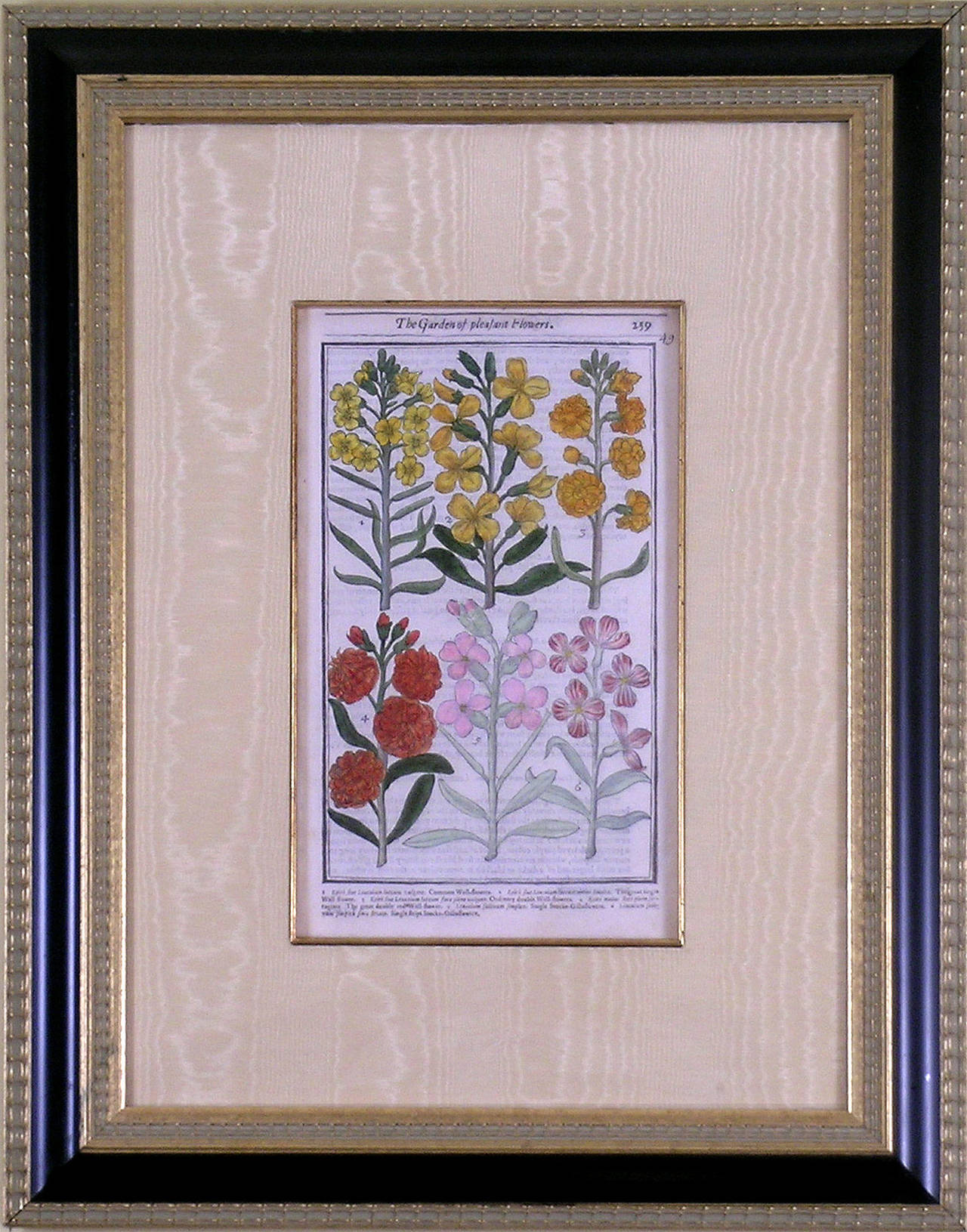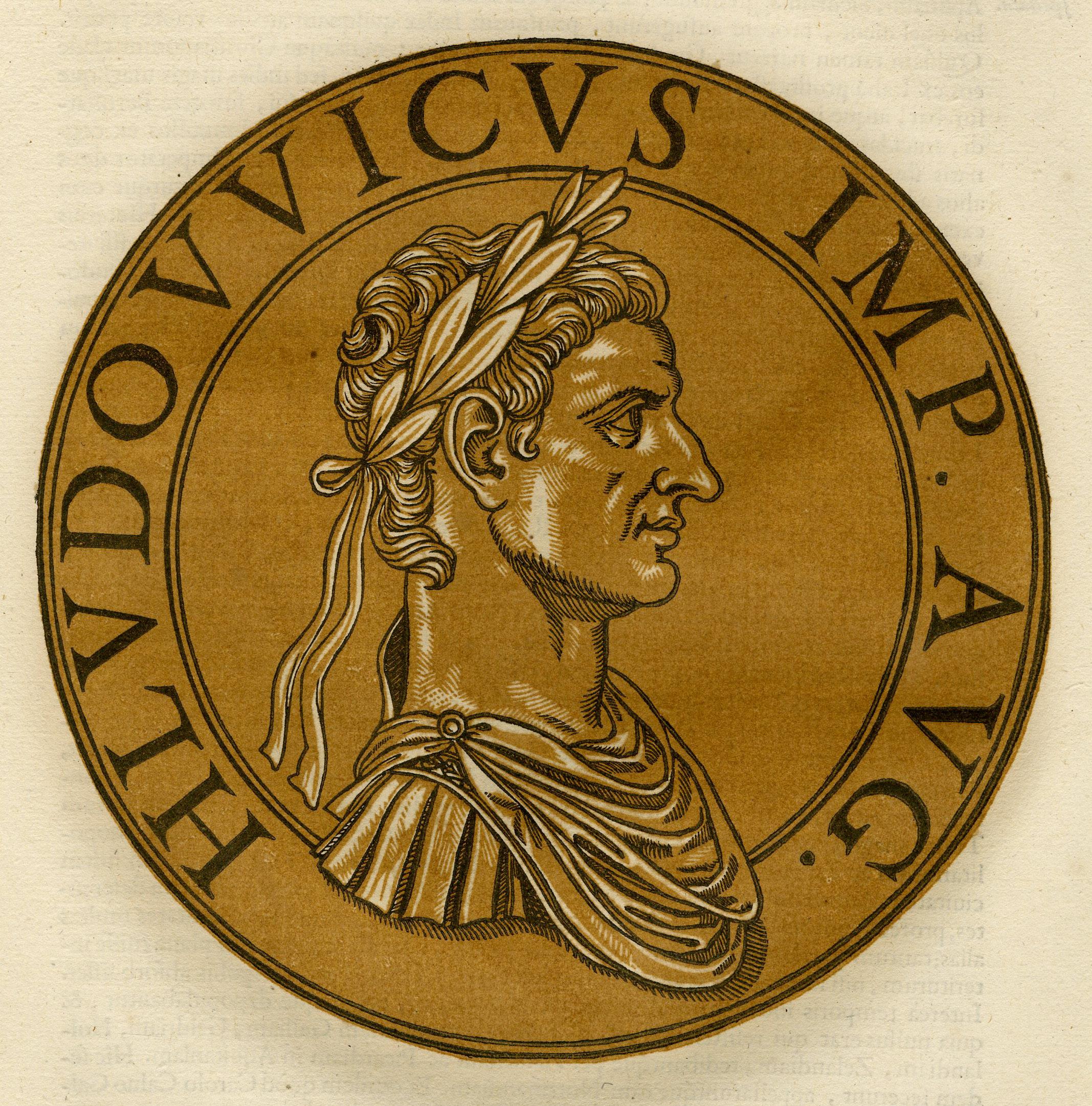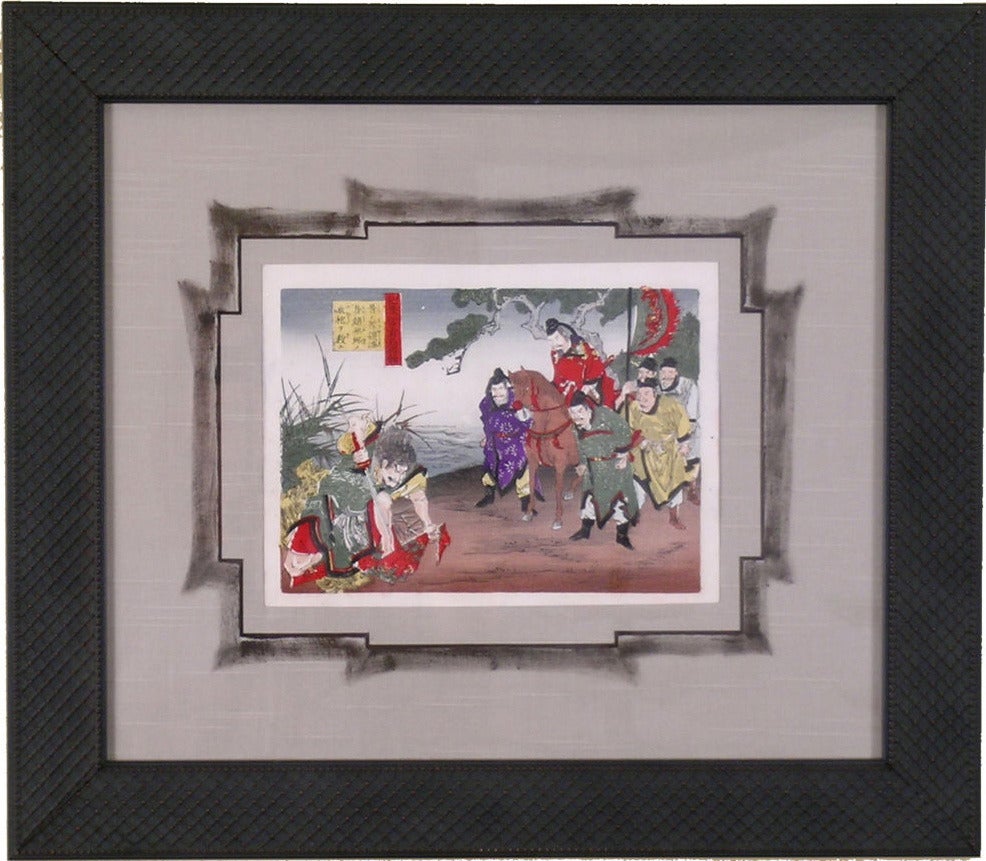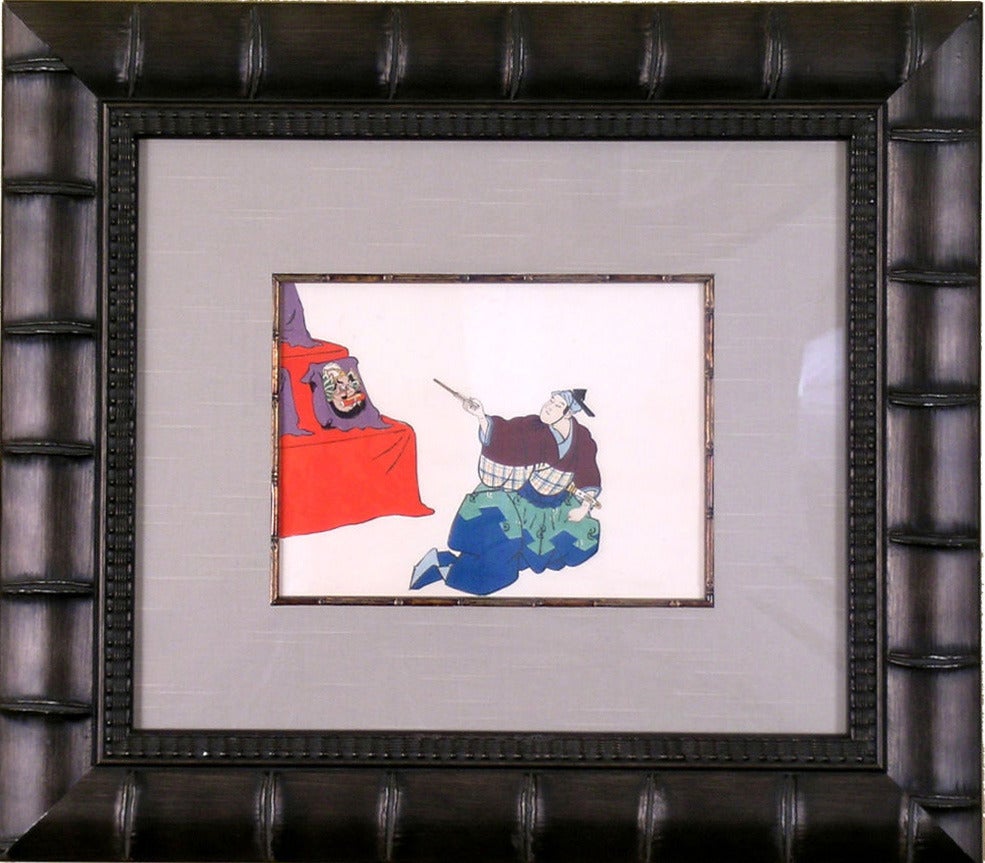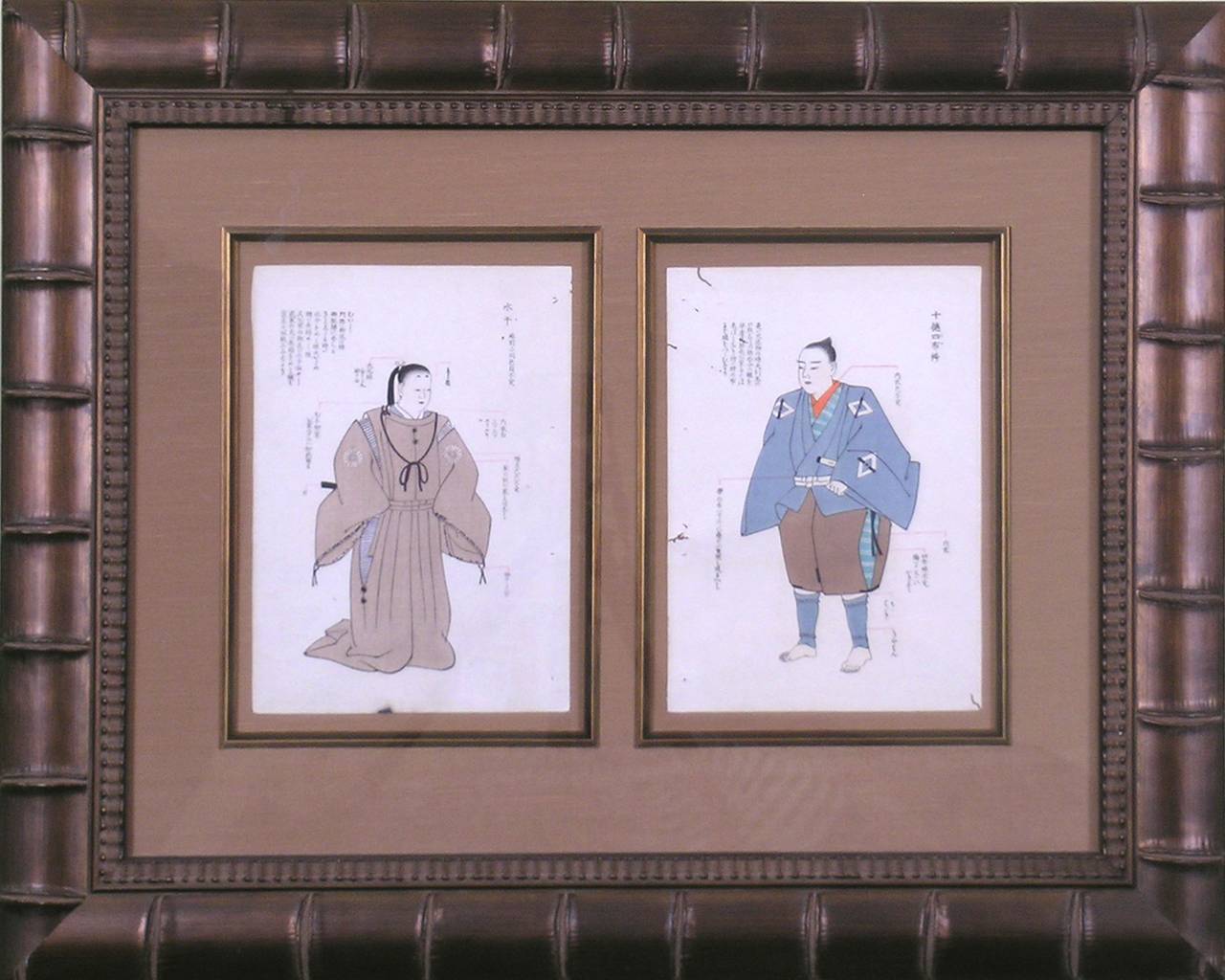Items Similar to Kabuki Theatre: Ya No Ne - The Arrow-Head
Want more images or videos?
Request additional images or videos from the seller
1 of 6
UnknownKabuki Theatre: Ya No Ne - The Arrow-Headca 1900
ca 1900
About the Item
Kabuki Theatre
Meji 33 (ca1900)
Woodblock
Original Hand-Color.
Woodblock printing flowered in the Edo Period, mid to late 19th century, and is still considered an art form of great precision and beauty. Following the artist sketch, an image is carved into a block of wood. Black inks form the outline of the flower and color inks are applied to specific areas. The woodblock is then pressed to hand-made screened paper which is then hung dry. The entire process of composing a single image can take weeks.
The history of kabuki began in 1603 when Izumo no Okuni began performing a new style of dance drama in the dry riverbeds of Kyoto, present-day Toyko. The style was immediately popular, and Okuni was asked to perform before the Imperial Court. In the wake of such success, rival troupes quickly formed, and kabuki was born as ensemble dance and drama performed by women—a form very different from its modern incarnation. Much of its appeal in this era was due to the ribald, suggestive themes featured by many troupes; this appeal was further augmented by the fact that the performers were often also available for prostitution.
Kabuki became a common form of entertainment in Yoshiwara, the registered red-light district in Edo. A diverse crowd gathered under one roof, something that happened nowhere else in the city. Kabuki theaters were a place to see and be seen as they featured the latest fashion trends and current events. The stage provided good entertainment with exciting new music, patterns, clothing, and famous actors. Often men would play both male and female roles. Performances went from morning until sunset. The teahouses surrounding or connected to the theater provided meals, refreshments, and good company. The area around the theatres was lush with shops selling kabuki souvenirs. Kabuki, in a sense, initiated pop culture in Japan.
Today, kabuki is the most popular of the traditional styles of Japanese drama—and its star actors often appear in television or film roles.
- Creation Year:ca 1900
- Dimensions:Height: 18.5 in (46.99 cm)Width: 21 in (53.34 cm)
- Medium:
- Movement & Style:
- Period:
- Condition:Clean, crisp image. Beautiful original color. Framed to museum specifications using archival matting, backing, hinging. Silk mat with wooden fillet. Glazed with ultra-violet filtering Plexiglas.
- Gallery Location:Florham Park, NJ
- Reference Number:
About the Seller
5.0
Gold Seller
These expertly vetted sellers are highly rated and consistently exceed customer expectations.
1stDibs seller since 2014
161 sales on 1stDibs
Typical response time: 3 hours
- ShippingRetrieving quote...Ships From: Florham Park, NJ
- Return PolicyA return for this item may be initiated within 1 day of delivery.
More From This SellerView All
- Wall FlowersBy John ParkinsonLocated in Florham Park, NJJOHN PARKINSON (1567-1650). Paradisi in Sole Paradisus Terrestris. Published by Thrale. London, 1629. Woodcuts by Christopher Switzer. Later hand color. 110 woodcuts. "...a Garden of all sorts of pleasant flowers which our English are will permit to be noursed up...". Parkinson's work is among the most famous English gardening books...Category
18th Century and Earlier Academic Prints and Multiples
MaterialsWoodcut
- Rosa (Roses)By John ParkinsonLocated in Florham Park, NJJOHN PARKINSON (1567-1650). Paradisi in Sole Paradisus Terrestris. Published by Thrale. London, 1629. Woodcuts by Christopher Switzer. Later hand color. 110 woodcuts. "...a Garden of all sorts of pleasant flowers which our English are will permit to be noursed up...". Parkinson's work is among the most famous English gardening books...Category
18th Century and Earlier Academic Prints and Multiples
MaterialsWoodcut
- Kimono Design Men - Peach, Light BlueBy Matsui YuokuLocated in Florham Park, NJREISHIN GACHO (Album of Beautiful Designs) Japanese Kimono Designs Matsui Yuoku, Painter Japan, 1900 (Meiji 33) Honda Ichijirou, Publisher Woodblock Prints Celebrated as mu...Category
Early 1900s Academic Prints and Multiples
MaterialsWoodcut
- Kabuki Theatre: Zo-Hiki (Drawing the Elephant)Located in Florham Park, NJKabuki Theatre Meji 33 (ca1900) Woodblock Original Hand-Color. Woodblock printing flowered in the Edo Period, mid to late 19th century, and is still considered an art form of gre...Category
Early 1900s Academic Prints and Multiples
MaterialsWoodcut
- Kabuki Theatre: Shibaraku - Stop a MomentLocated in Florham Park, NJKabuki Theatre Meji 33 (ca1900) Woodblock Original Hand-Color. Woodblock printing flowered in the Edo Period, mid to late 19th century, and is still considered an art form of gre...Category
Early 1900s Academic Prints and Multiples
MaterialsWoodcut
- Ikebana - Carnations and AstilbeLocated in Florham Park, NJIkebana Japanese Woodblocks. Meiji Period. Circa 1895. A disciplined art form, Ikebana seeks to bring nature and man together. The emphasis is on form and simplicity of design...Category
Late 19th Century Academic Prints and Multiples
MaterialsWoodcut
You May Also Like
- Louis I of France as a Roman Emperor, in profile to the rightBy Christoffel JegherLocated in Fairlawn, OHLouis I of France as a Roman Emperor, in profile to the right Chiaroscuro woodcut, 1631-1633 Unsigned (as usual) After a drawing by Hubert Goltzius (1526-1583)...Category
17th Century Academic Portrait Prints
MaterialsABS, Woodcut
- Greek Architecture Blueprint of Ancient Amphitheatre Cyanotype Print, WatercolorBy Kind of CyanLocated in Barcelona, ESThis is an exclusive handprinted limited edition cyanotype. Details: + Title: Ancient Roman Amphitheater + Year: 2022 + Edition Size: 50 + Stamped and Certificate of Authenticity provided + Measurements : 70x100 cm (28x 40 in.), a standard frame size + All cyanotype prints...Category
2010s Academic Still-life Photography
MaterialsPhotographic Film, Woodcut, Emulsion, Watercolor, C Print, Color, Lithog...
- Hand-colored 1834 Joseph Paxton Botanical Engraving of Yellow Trumpet FlowersBy Joseph PaxtonLocated in Alamo, CAA hand-colored engraving of yellow trumpet flowers from Sir Joseph Paxton's (1803-1865) "Magazine of Botany and Register of Flowering Plants", published in 1834. This engraving entit...Category
Early 19th Century Academic Figurative Prints
MaterialsEngraving
- Flowering Jasmine and Laurel Plants: A Besler Hand-colored Botanical EngravingLocated in Alamo, CAThis is a hand-colored copper-plate engraving entitled "Gelsiminum Catalonicum, Mairana Latifollia, Euphasiaramosa Pratensis Flore Albo, Euphasia Minus Ramosa Flore Excereruleo Purpurascente", depicting flowering Jasmine, Mountain Laurel...Category
1710s Academic Still-life Prints
MaterialsEngraving
- A 19th century Colored Botanical Engraving of Flowers by CzeigerLocated in Alamo, CAA colored 19th century botanical engraving of flowers by Anstalt S. Czeiger of Vienna, Austria. An inscription at the bottom includes: "Wien, Kai...Category
Late 19th Century Academic Figurative Prints
MaterialsEngraving
- Flowering Peppermint Plants: A 17th C. Besler Hand-colored Botanical EngravingLocated in Alamo, CAThis is a hand-colored copper plate engraving entitled "Pulegium Cervinum, Pseudo Pulegium Struthium, Pulegium Regium", depicting flowering Peppermint, Weld and Pennyroyal plants res...Category
1640s Academic Still-life Prints
MaterialsEngraving
Recently Viewed
View AllMore Ways To Browse
Antique Arrows
Antique Arrow
Antique Print Shops
Antique Shop Print
Antique Print Shop
The Antique Print Shop
Antique Theatre
Theatre Antique
Antique Flower Prints Art Prints
Wood Arrow
Used Wood Arrows
Antique Print Block
Japaneses Block Print
Japanese Block Prints
Lighted Arrow
Japanese Fashion Men
Midcentury Pop Prints
Arrow Heads
